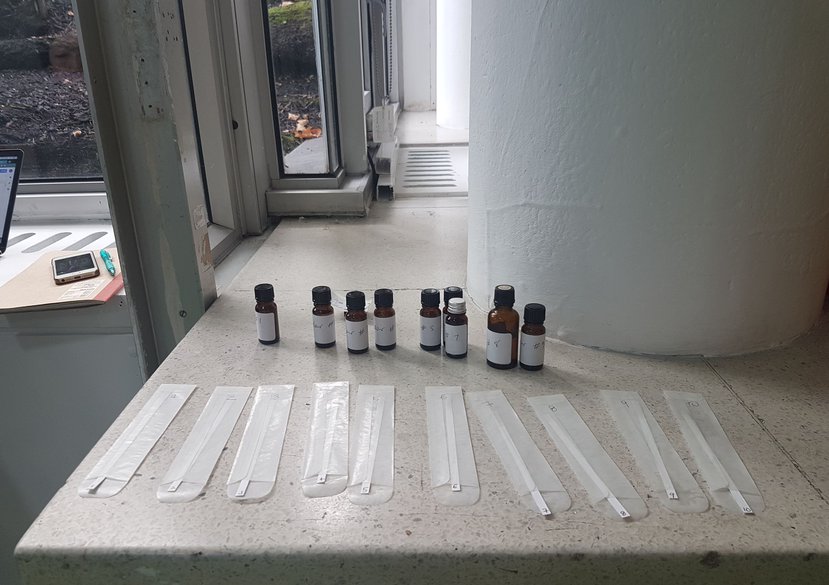
Olfactory Sense as Design Material for the Aesthetic Experience Design for Human-AI Interaction: An Interdisciplinary Perspective
The lack of user satisfaction that leads to a lack of user engagement and a complete user abandonment of smart service product (SSP) is a well-reported phenomenon. This study inquires the phenomenon of user abandonment in smart service system through the theoretical lens of SD-logic thinking and explores olfactory stimulus as design material for aesthetic experience design in human-SSP interaction.
More specifically, this study explores whether olfactory stimulus that elicits a positive emotional response in user triggers the aesthetics of experience in human-SSP interaction. In doing so, it aims to answer whether aesthetics of experience emerged in human-SSP interaction could enable value co-creation between user and SSP, which may enhance user satisfaction and engagement while reducing the user abandonment.
It takes a research through design methodological approach and conducts a series of design experiments to explore the research questions. The findings from design experiments have become the key theoretical underpinnings of the Aesthetics of Experience Design Framework for Human-SSP Interaction.
This study contributions are three-fold. First, this is an interdisciplinary study which situates at the intersection of service design and services marketing, and it directly responds to the call for contributions from interdisciplinary studies by the services research community. Secondly, it examines the human’s olfactory sense which has been under-explored in HCI. It is also the first study that explores the olfactory stimulus as potential design material from a service design perspective and generates new design implications for the aesthetics of experience design in HCI. Lastly, this study examines the phenomenon of user abandonment in smart service system through the theoretical lens of SD-logic thinking, while it takes a research through design approach to inquire its research question. This hybrid approach is novel which offers firsthand exposure to design researchers who are interested in exploring olfactory stimulus as design material for the aesthetics of experience design in HCI.
Gallery
More about Cecilia
Biography
Cecilia has worn many different hats so far. She is currently spending her time as a design researcher and service design practitioner working at the intersection of design and emerging technologies. She is, however, originally trained as a marketer and worked in GTM and strategy domain for many years with leading multinational companies and the United Nations for some time.
Degrees
PhD in Service Design in progress, Royal Collage of Art, 2017 - Present
MBA in International Organisations (UN System), University of Geneva, 2011-2012
MA in Global Studies, Sophia University, Tokyo, Japan, 2006-2009
BCom/BA a dual degree, Marketing/Chinese, University of Auckland, Auckland, NZ, 2002-2006
Experience
You can find more info on my work experiences at linkedin.com/in/cecilialeegeneva
Awards
European Commission Marie Sklodowska-Curie Action Research Scholarship 2016-2017
Funding
European Commission Marie Sklodowska-Curie Action Research Scholarship 2016-2017
Exhibitions
The Work 4.0 Era, London Design Biennale, 2021
Scent Category Development, Work-in-Progress Design Show, Royal College of Art, 2019
Value Co-Creation in Smart Service System, Work-in-Progress Design Show, Royal College of Art, 2018
Publications
Lee, C. (2021). Navigating the complexity of service systems: Service design practice through a systems thinking approach. Touchpoint (The Journal of Service Design), 12(2).
Lee, C. (2020). Olfactory sense as an object of design practice: Designing for an emotional experience in the smart technology sector. The Design Journal, 23(3), 463-474.
Lee, C. and Leon, N. (2018). Aesthetics of Interaction between Human and AI: A Multisensory Approach. Touchpoint (The Journal of Service Design), 10(2).
Conferences
More info at https://www.cecilialee.space
